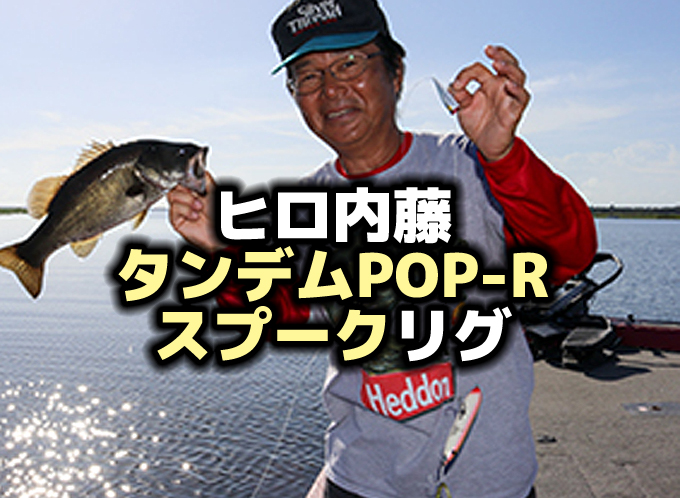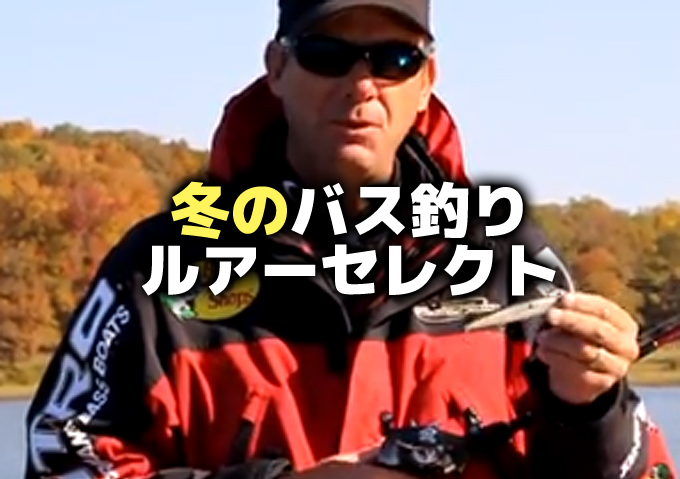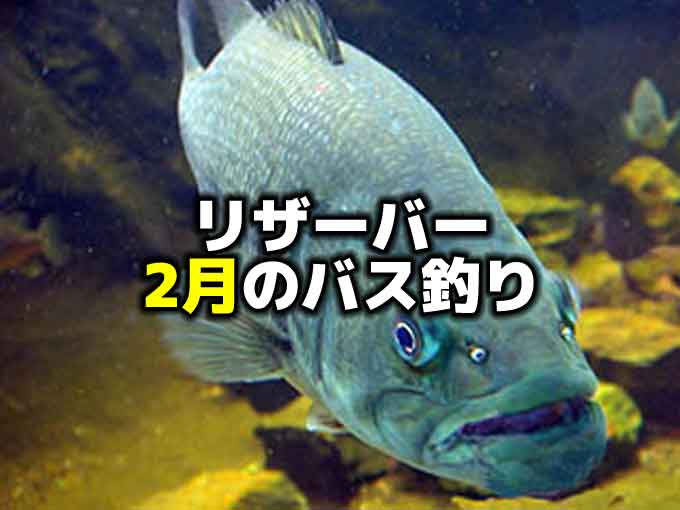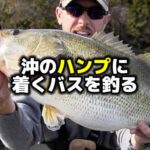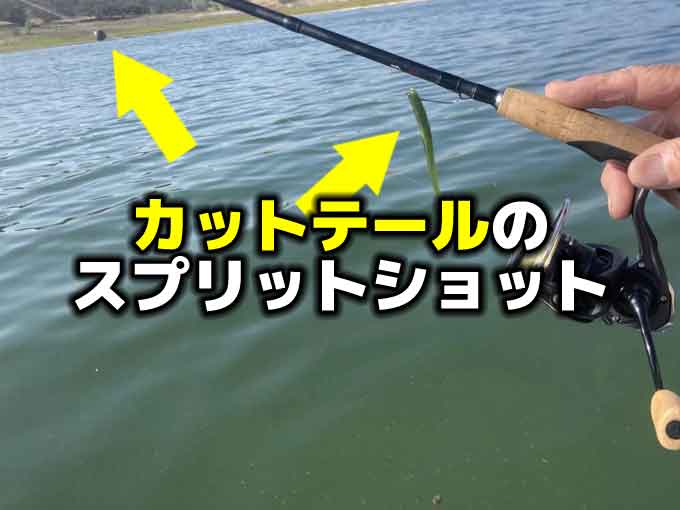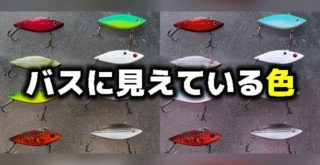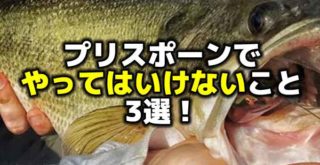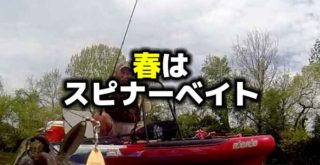冬のスーパーディープのバスを釣る

Photo by scout.com
こんにちは!店長の小山です!
本日は海外サイトより、”Catch Super Deep Winter Bass Easily”という記事を引用してご紹介いたします。
引用先:scout.com”Catch Super Deep Winter Bass Easily”By Luke Stoner – Dec 14, 2015(海外サイトです)
冬のバス釣り。私の住む長野県北部には、全国的に見ると少し早く冬がやって来ます。そして、少し厳しい冬がやって来ます。
人間なんとなく、冬に寒い地域にいると寒さ自慢、夏が暑い地域にいると暑さ自慢をしてしまうのはなぜなんでしょうね、辛いはずなんですけどね(笑)
私のいる地域が全国的に見て寒い方だとはいえ、日本の冬ですから、全国どこにいたって冬は寒いです。これはもうどうしようもなく、寒いものは寒いんです。
そんな寒い時期のバス釣りは、なかなか厳しいものですよね。手はかじかんで動かなくなってしまうし、使えるルアーも限られてしまいますし、それでいてバイトが多いわけでもない。
この記事は、アメリカB.A.S.Sオープンに参加するプロでありトレドベンドのフィッシングガイドであるダロルド・グリーソン氏が、冬のバス釣りをする皆さんが希望を失わないよう、冬のディープにいるバスの釣り方を共有してくれたものです。
彼は冬のバス釣りを徹底的にやりこみ、冬を攻略するためのひとつの大きな方法を見つけたそうです。それは、「バスのいるところに行くこと」
いや、それはそうでしょうよ(笑)
でもちょっと待ってください。彼はこの時期、他の人が釣るであろうディープよりもさらに深いところを釣るそうです。そして試行錯誤の末、スーパーディープの冬バスを釣るために有効なシステムを見つけたそうです。
そういうことなら読んでみたいですよね!
ディープのバスを探す
Catching winter bass out of the depths isn’t as easy as racing your boat towards deep water and casting out a line.
“Deep is relative depending upon the body of water and the clarity of water you’re fishing,” Gleason explained. “Super deep on a lake like Toledo Bend may be 25-40 feet. While really deep on Table Rock or Lake Lanier could be anywhere from 60-100 feet.”
Gleason begins his search for super deep winter bass in areas near or around their summer hangouts. This, too, is going to be contrasting depending upon the body of water you are fishing. For simplicities sake, we’ll say spots like deep underwater humps, submerged roadbeds, and river channel swings or ledges. These are all areas famous for housing populations of bass in the heat of summer, but Gleason knows to give them a look in the colder months, too.
“It may sound weird, but those deep winter bass will hole-up near their summer structure,” Gleason said. “They usually won’t be on the exact same area, but they will be near it. I like to take my best summer spots and look at the deepest edges.”
This is when Gleason relies heavily on his Lowrance electronics. He’ll slowly idle the structures he thinks could hold bass, using his graph to visibly see schools of baitfish and predatory fish.
“It makes it a little more challenging, because in winter you can’t quickly idle specific little spots,” Gleason said. “You have to idle the whole structure to find the fish. The fish might be 100 or 200 yards away from the best looking spot on the structure, but they are still there. They’ll just be with the baitfish out a little deeper than you are used to looking.”
ボートで我先に飛び出してディープエリアへ行き、キャストしたとしても、すぐに釣れるほど簡単ではありません。
「ディープというのはそのフィールドや透明度によります。 トレドベンドのような湖のスーパーディープは7.5~12メートルと言えるかもしれません。テーブルロックやラニエルレイクで真のディープと言えば18~30メートルと言っても構いません。」
グリーソン氏は、冬のスーパーディープを探す時、夏にバスが溜まっていた場所やその周辺を探します。これも、皆さんが釣っているフィールドによって相対的なものです。わかりやすく言えば、ディープのハンプ、古い道路跡、チャンネルスイング(チャンネルの曲がり角)や棚(大きな段差のような地形変化)のようなポイントです。これらは夏の暑さの中でバスの住みかとして知られていますが、グリーソン氏は寒い時期にもそこで見つけることができることを知っています。
「奇妙に聞こえるかもしれないが、冬のディープのバスは夏に付く地形変化の近くに溜まっているでしょう。 まったく同じエリアにはいなくても、近くにはいるでしょう。私は最高の夏のスポットへ行き、最も深い側を見てみます。」
グリーソン氏は、ローランス魚探に大きく依存しています。彼は、魚探で明らかにベイトフィッシュとバスであろう群れが映るストラクチャーを見つけるためスローにアイドリングで使っていきます。
「冬になると、アイドリングで特定の小さなスポットをすばやく見つけることができないので、少しだけ難しくなります。 魚を見つけるためにはストラクチャー全体をアイドリングで魚探掛けする必要があります。魚はそのストラクチャーで最も良さそうな所から100~200メートルも離れているかもしれませんが、そのあたりにいるのです。彼らはあなたが探しているよりも少し深いところでベイトフィッシュと一緒にいます。」
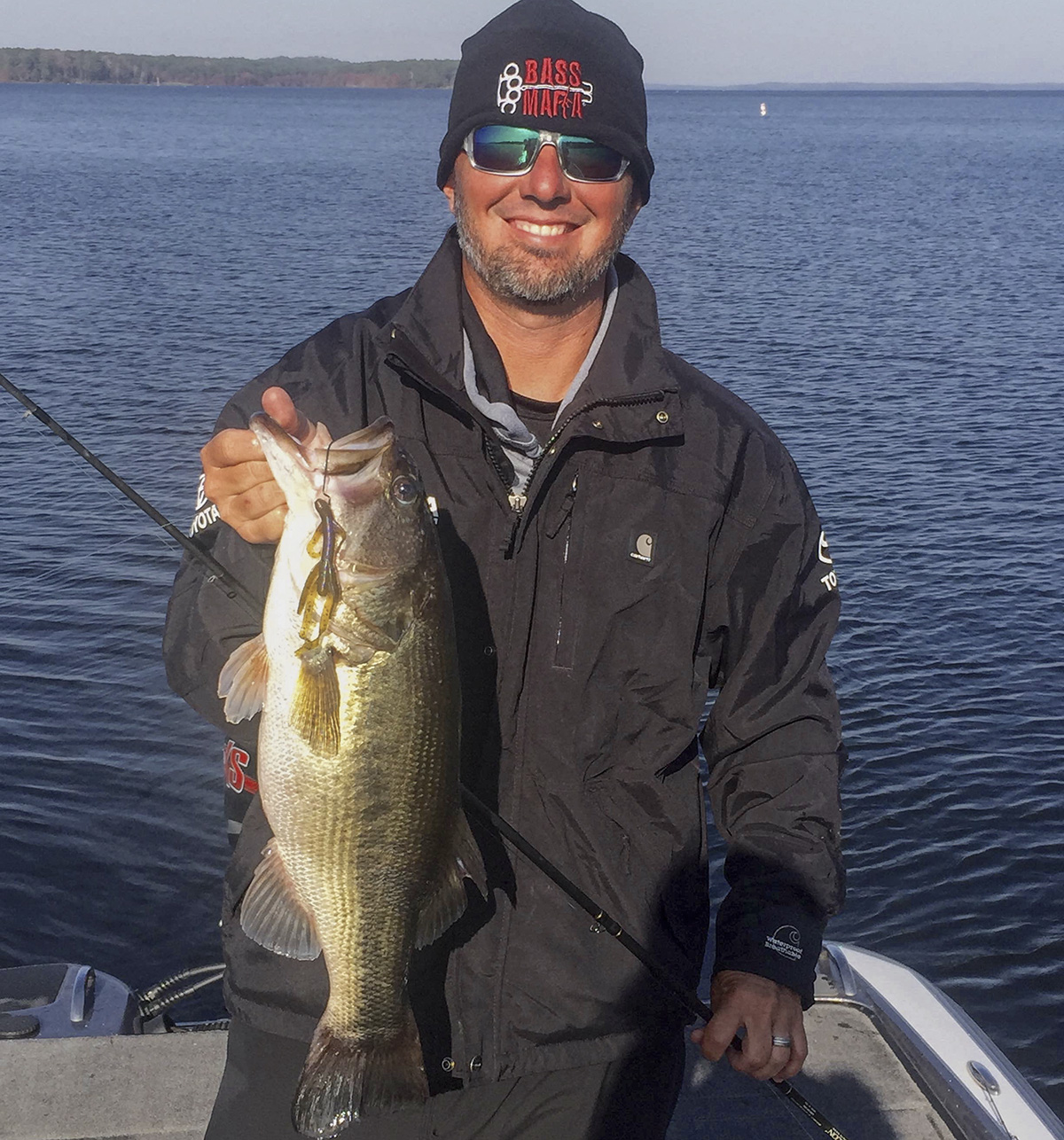
Photo by scout.com
魚探は必須です
“Down Scan imaging helps a lot when idling expansive areas, but you can still find deep fish with 2D sonar,” Gleason explained. “In fact, once I move up to my trolling motor and I am fishing, I only use 2D sonar. For me, I can get a clearer picture with my sonar when I am sitting right on top, or just off of the school, versus using Down Scan imaging.”
Many folks want to know exactly what a bass looks like on sonar or side imaging. Unfortunately, there isn’t any “magic” answer to this question. Time with the equipment will give you a comfort level for what you are seeing.
“Knowing what you’re looking at on your electronics is really just a process of elimination,” Gleason admitted. “You just have to spend time tinkering with your graphs to have a clear idea of what they are showing you. My advice is to take some time to graph different areas and schools of fish, then catch a few out of each school. Then even go back and idle them again once you know for sure they are bass.
“Through time, this is going to give you a good idea of what largemouth relating to baitfish look like. It’s also going to teach you what isn’t a school of fish. You’d be surprised at how much a brush pile can look like a school of bass until you set the hook into it, even with today’s modern electronics. It just takes practice.”
If you are a novice to using electronics, Gleason explained that winter could be the best time for you to experiment using them. During the winter month’s bass, baitfish, and other species of fish will all get tightly grouped up in small spots.
“That’s one nice thing about deep winter fishing – the fish are either there, or they are not,” Gleason said. “You might idle thousands of yards without so much as a blip on your screen and then all of the sudden you will find them, and usually a lot of them in one little area. This makes all the time you burn idling around looking worth it, because when you find the fish, you can find huge schools.”
What you will actually see on your electronics screen differs from day to day, even minute to minute, but in general Gleason just tries to pick out the obvious.
“On your Sonar you want to find “lasagna” – where you’re seeing hard returns on your graph,” Gleason said. “Ideally, you want to see a cloud-like school of baitfish with little arches and diagonal streaks below them, or even running through them. Those are feeding fish. But just as often in the winter, I will find schools of bass suspended with the shad, with little to no separation.”
When Gleason is behind the console of his boat, idling around, he favors using DownScan imaging and what he sees using this will vary slightly from what he sees on his 2D Sonar.
“With using DownScan imaging what you often see is a cloud-like school of baitfish with little snowflake looking dots underneath them,” Gleason explained. “This time of year, there is no telling what species of fish they are, so at that point you have to fish for them.”
「ダウンスキャンイメージは広大な領域をアイドリングするときには大いに役立ちますが、2Dソナーでもディープの魚を見つけることはできます。 実際には、エレキを下ろして釣っているときは、2Dソナーしか使用しません。私としては、フロントデッキで釣っている時や、魚の群れが離れてしまった時はダウンスキャンよりも2D画像の方がより見やすいのです。
多くの人々は、ソナーやサイドイメージでバスがどのように見えるかを正確に知りたがっています。残念ながら、この問いには万能な答えはありません。機器と接した時間が、快適に見えるレベルを上げてくれるでしょう。
「魚探を見て理解するということは、実際には排除のプロセスに過ぎません。 今何が見えているのかを明確に理解するためには、魚探を使う時間を費やすことで済むでしょう。私のアドバイスとしては、さまざまなエリアで魚の群れが映ったら、それぞれの群れから少しでも釣ってみることです。そして、それがバスであることを知ったら再び魚探がけを続けます。」
「これにより、時間が経つにつれてベイトフィッシュとラージマウスがどのように関係しているかを知ることになるでしょう。それはまた、魚の群れではないことをも教えてくれるでしょう。最新の魚探でも、フックにかけてみるまでは単なる枝がバスの群れのように見えてしまうことに驚くかもしれません。それだけ練習が必要なのです。」
魚探を使用するのが初心者の方であれば、冬はそれを使って試すのに最適な時間かもしれないとグリーソン氏は説明しました。冬はバスも含み、ベイトフィッシュや他の種の魚もすべて小さなスポットに集まっています。
「それが魚なのか、そうでないかを判別するためにも冬のディープの釣りは素晴らしいことです。 もしかしたら画面上に何も映らず何千メートルもアイドリングしてしまうかもしれませんが、だいたい小さなエリアに魚がたくさん映るのを突然見つけることになります。魚を見つけたということは巨大な群れを見つけたということができ、この周りをアイドリングしている間はずっと映り続けますから、これはかなり価値あるものを見つけたということになります。」
魚探の画面に映るかどうかは毎日、そしてその時々で異なってしまいますが、グリーソン氏は全体の中から、確実なものを探すようにトライしています。
「魚探では、画面上に「ラザニア(パスタとソースが幾重にも重なり合う料理)」のような強い反応を見つけたいと考えています。 理想的なのは、まず雲のようなベイトの群れの反応を見つけたいと思っています。その下に「へ」の字や斜めの縞模様があるか、ずーっと横に伸びている線がれば、それらはフィーディングしている魚なのです。しかし、冬に関して言えば、シャッドの群れとぴったりくっついてサスペンドしているバスの群れも見つけられます。」
グリーソン氏がボートの運転席にいてアイドリングしているときは、彼はダウンスキャンイメージングを使用することを好んでおり、これを使って見ているものは、2Dソナーで見たものとは少し異なります。
「ダウンスキャンイメージングを使用することで見ているのは、雲に似たベイトフィッシュのスクールのような小さな点々ではなく大きな魚影です。 この時期は、どの種の魚がいるのか分からないので、画面に映った時点で釣りをする必要があるのです。」
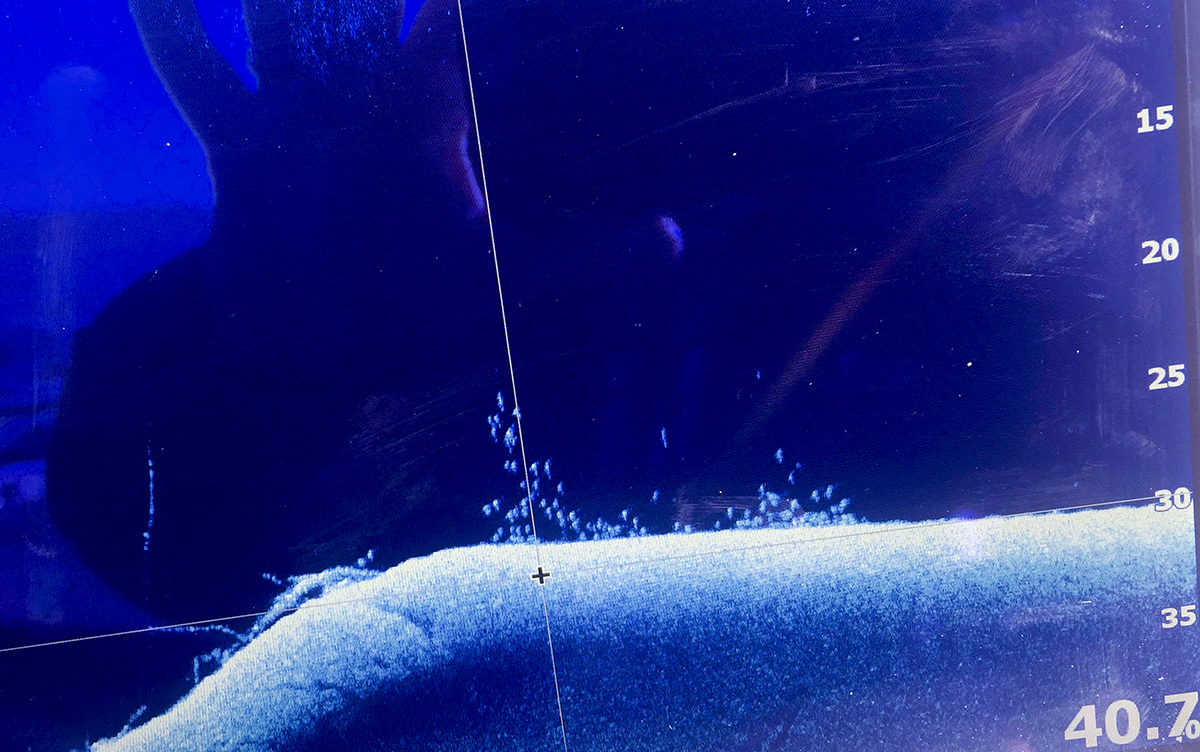
Photo by scout.com
スーパーディープ用ルアー
Once Gleason locates a school of fish with his electronics, he relies on three different bait presentations. Gleason will rotate through all three of these lures on each school he fishes.
Jigging Spoon
“The first bait I pick up throughout the winter is a little nickel-plated, 7/8-ounce War Eagle Jigging Spoon,” Gleason said. “It may not be the sexiest lure on the market, but those little things will flat out catch fish. I work a spoon pretty aggressively, even in the cold water. I’ve learned the more activity I see on my electronics, the more action I can impart on the spoon.”
Gleason throws his jigging spoon on a 7-foot Medium Heavy Cara Falcon Rod and a super fast 8:1:1 Quantum Smoke reel spooled with 15 to 17-pound fluorocarbon line.
Drop Shot
“If I can’t get them to eat the spoon, I’ll pick up a drop shot,” Gleason said. “I’ll usually throw the lightest weight I can, something around 1/4-ounce. I like to throw a watermelon candy V&M Pork Pin on a drop shot, but any finesse worm should get the job done. Honestly, when I am fishing a drop shot I’m not doing a whole lot. Essentially I am just getting the groceries down in front of them and hoping they’ll bite.”
When drop shotting, Gleason uses a 7-foot Jason Christie Falcon spinning rod with an Exo Quantum spinning reel. Gleason favors 12-pound braided line for his main line and keeps about a 6-foot leader of 8-pound fluorocarbon to help get a few extra bites throughout the day.
Carolina Rig
“The Carolina Rig is my clean up bait for winter schools because I know I’m liable to catch a giant with it,” Gleason admitted. “I don’t get a lot of bites with it, but I get big ones. I still throw just a 1-ounce lead sinker on my rig, because you break off a lot. There is no sense in losing that much tungsten. Thread on either a creature or fluke style bait, like a V&M Swamp Hog or Pork Shad.”
The 7-foot 6-inch Falcon Carolina Cara is his rod of choice for this technique fitted with a Quantum Tour MG reel in 7:1:1. To help feel the sensitive bites in the depths, Gleason sticks with 15 to 20-pound fluorocarbon for both his main line and his 2 to 3-foot leader line.
グリーソン氏が魚探で魚の群れを見つけたら、3つの異なるルアープレゼンテーションをしています。 グリーソン氏は、群れを釣るときはこれら3種のルアーすべてをローテーションさせます。
メタルジグ
「私が冬の間に使う最初のルアーは、ニッケルメッキされた7/8オンスのウォーイーグル社のジギングスプーン(メタルジグ)です。 市場にある中でかっこいいルアーではないかもしれませんが、見た目に似合わず速攻で魚を釣ってくれます。私は低水温の中であっても、かなりアグレッシブにメタルジグを扱います。私は魚探を見ながらアクションさせてみたところ、派手なアクションの方が魚が反応することを学びました。」
グリーソン氏は7フィートのミディアムヘビーロッドと、8.1:1の超ハイスピードリールに15〜17ポンドのフロロカーボンラインを巻いてメタルジグを投げています。
ダウンショット
「スプーンに食ってこなければ、ダウンショットです。 私はだいたい、1/4オンス程度の軽いシンカーで投げます。私はV&Mポークピン(細身のストレートワーム)のウォーターメロンキャンディをダウンショットで投げるのが好きですが、どんなフィネスワームを使おうとも変わりません。正直なところ、私がダウンショットで釣っているときは、ずっとアクションさせません。基本的には、食料を彼らの目の前に置いておくだけで、向こうからバイトしてくるのを期待しています。」
ダウンショットでは、グリーソン氏は7フィートのスピニングロッドを使用します。リールにはメインラインに12ポンドのPEラインと8ポンドのフロロカーボンリーダーを約1.8メートル使用します。
キャロライナリグ
「キャロライナリグは、スーパービッグが来る可能性が高いことから、冬の魚の群れを釣る私の4番バッターです。 多くのバイトを得ることはありませんが、ビッグフィッシュが来ます。だいたい1オンスまでのシンカーをつけて投げます。それ以上はラインブレイクが多くなってしまうので。高価なタングステンシンカーを失う意味はありませんからね。 V&M スワンプホッグやポークシャッドのようなクリーチャー系かフルーク系のワームを使ってください。」
彼は7フィートの6インチのロッドに、7.1:1のリールを装備してこのテクニックに使います。ディープでも敏感にバイトを感じるために、グリーソン氏はメインラインにも2〜3フィートのリーダーにも15〜20ポンドのフロロカーボンを使っています。
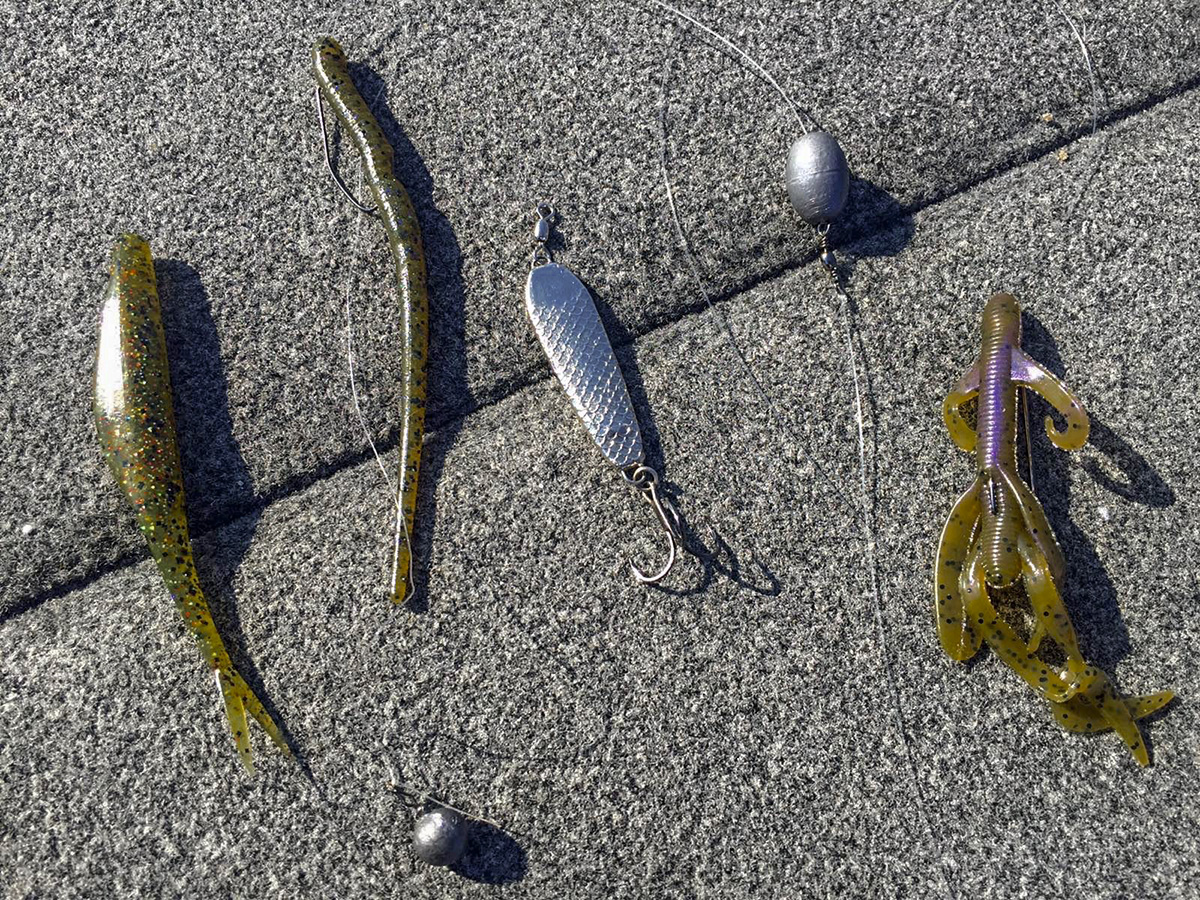
Photo by scout.com
いかがでしたか。
いかにもスーパーディープを攻略しようじゃないかというルアーやリグのセッティング。そして魚探への信頼。
この信頼感というのも経験がなければなかなか積み重ねられないものではないかと思います。
ディープの釣りはシャローに比べて時間が掛かりますので、結果を出すのも、マスターするのも時間が掛かるものだと思いますが、面倒臭がっていてはバスが冬休みを満喫してしまうばかりで、私の相手もしてくれません(笑)
せっかくの記事ですので、いつもより魚探掛けにじっくり時間をかけ、冬のその日その時のエリアを見つけることを目標に冬のバス釣りに取り組んでみようと思います。
この記事が気になった方もぜひ、冬のバス釣りのスーパーディープマスターを目指してみて下さい。
それでは、また。
毎度ありがとうございます!





